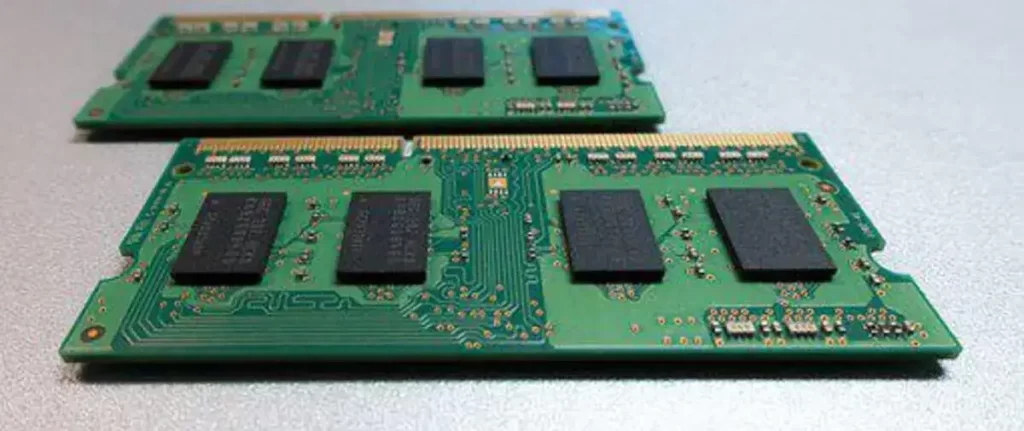The internal logic design of a Computer is known as the architecture of the Computer. It consists of a CPU or Microprocessor, Input devices, Output devices and Memory. Computers work according to commands. While working the computer stores the input data and mid-work output data in its memory. The storage of a Computer is not a single cell in its architecture. There are various types of Memory in a Computer – some are internally built and some are connected externally. In this article, I’m going to discuss all those memories.
What is the Memory of a Computer?

Memory in a Computer is a subsystem of a digital processing system which can store digital data and binary-coded instructions. One can imagine that a Memory is made of a large number of cells that stores a 0 or a 1 bit. The memory circuit plays an important role in the operation of a Computer.
Use of Computer Memory
Computer system stores digital data and binary-coded instructions in its memory cells. The number of cells gives the capacity of the Memory. A computer must communicate with memory and other components to perform an operation as per command. During its operation Computer reads instructions from the Memory.
Types of Memory in Computer Systems

Memory elements in a Computer are mainly classified into two categories –
- Primary Memory or Main Memory
- Secondary Memory
RAM and ROM are two Primary Memories and Magnetic storage devices and Semiconductor devices are two types of secondary storage.
Apart from these, some other memory elements like resisters, cache memory, etc. are also available. All these are discussed below.
Primary Memory in Computer
A computer uses primary storage or main memory to store programs and data during its execution. Read-only memory (ROM) and Random access memory (RAM) are the two main memories in a computer.
Read only Memory (ROM)
A read only memory device can store data permanently on a computer. This is a non-volatile type of memory, it can store data even when the power supply is off. One can read out the stored data in any memory location during normal operation. This is the permanent memory in the computer.
ROM is available in the form of IC and can be made by using diodes or BJT Transistors or MOSFETs. SD card is an example of ROM. ROM can be programmable (PROM) and erasable (EPROM).
Random Access Memory (RAM)
Random access memory (RAM) is read-write memory. It can store instruction and data temporarily and one can read and write the data in any location of memory. RAM is a volatile type of memory. So, it losses the contents after switching off the power supply.
There are two types of RAM – Static RAM and dynamic RAM. Static RAM stores data as long as the power supply is on, but the stored data in dynamic RAM gets refreshed periodically.
Secondary Memory in Computer
The main memory (RAM) of a computer is volatile in nature. But, sometimes the computer needs to store programs and data for future uses. For this purpose, a computer must have a permanent type of memory.
Memories that are used to store data permanently in a computer are secondary memories. Some of the examples of Secondary memory are Magnetic hard disks, floppy disks, Compact disk read only memories (CD-ROMs), etc. These are the virtual memories in the computer.
There are two types of secondary memory in computers –
- Magnetic storage devices
- Semiconductor devices or Flash Memory
Dard discs, Compact discs (CD), Digital Versatile devices (DVD), Optical storage, etc. are examples of Magnetic storage devices. Among the Flash memories, there are USB flash drives and flash memory cards.
Cache memory in Computer architecture
In addition to primary and secondary memories, a computer has Cache memory in the region between the CPU and the main memory. Cache memory is a small and high-speed memory that stores currently needed instructions and data. It is a good option to increase the speed of operation of a computer without having any expensive resort. The maximum theoretical cache size is 2 MB. Cache memory is the fastest memory in the computer system.
Memory devices in Computer
Memories are available in the form of devices. SD cards, memory cards, Hard disks, CDs, Pen drives, etc. are the memory devices for a computer. There are two types of memory units in a computer – external memory and internal memory. The memory devices mentioned above are external memories. RAM, ROM, and Cache memories are internal memories of a computer.
Discussion of the summary
A computer needs memory to store instructions and data. It has primary memory (ROM and RAM), secondary memory (Hard disk, floppy disk, etc.) and cache memory. The full form of ROM is read only memory and RAM is the read-and-write memory which has the full form as random access memory. The main purpose of secondary memory is to store data or instruction permanently. Cache memory stores the real-time data and increases the speed of the operation or decreases the response time.
- ROM is the permanent memory in the computer.
- Secondary memory is the virtual memory in computer architecture.
- Cache memory is the fastest memory in the computer system.
- Resisters are the temporary memory units.
This is all from this article on different types of memory in computer architecture and their uses. If you have any doubts about this topic, you can ask me in the comment section.
Thank you!
Related Posts:
3 thoughts on “Types of Memory in Computer Architecture”
Comments are closed.